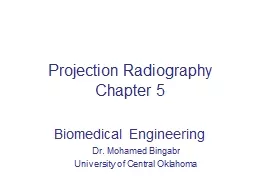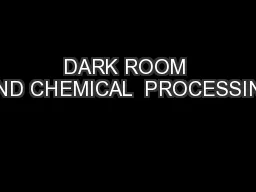PPT-Processing X ray Film Formation of the latent image
Author : elena | Published Date : 2024-03-13
Film emulsion consists of photosensitive crystals containing primarily Ag bromide suspended in a vehicle and layered on a plastic base Some crystals also contain
Presentation Embed Code
Download Presentation
Download Presentation The PPT/PDF document "Processing X ray Film Formation of the l..." is the property of its rightful owner. Permission is granted to download and print the materials on this website for personal, non-commercial use only, and to display it on your personal computer provided you do not modify the materials and that you retain all copyright notices contained in the materials. By downloading content from our website, you accept the terms of this agreement.
Processing X ray Film Formation of the latent image: Transcript
Download Rules Of Document
"Processing X ray Film Formation of the latent image"The content belongs to its owner. You may download and print it for personal use, without modification, and keep all copyright notices. By downloading, you agree to these terms.
Related Documents














